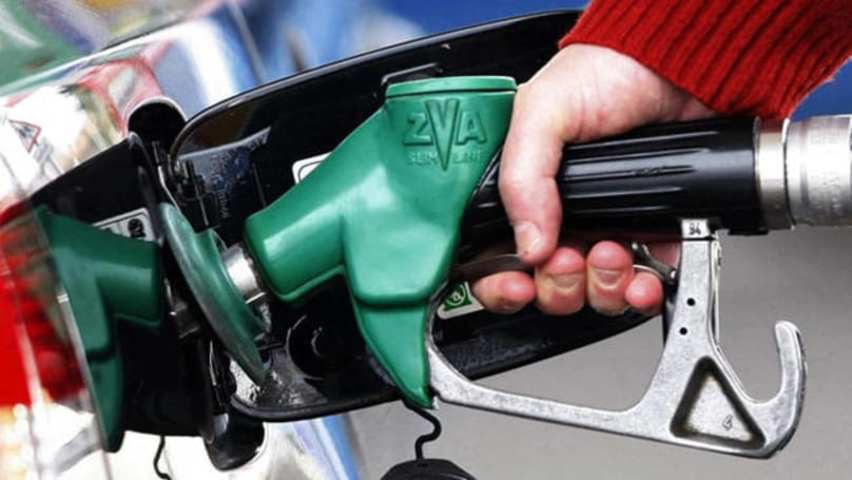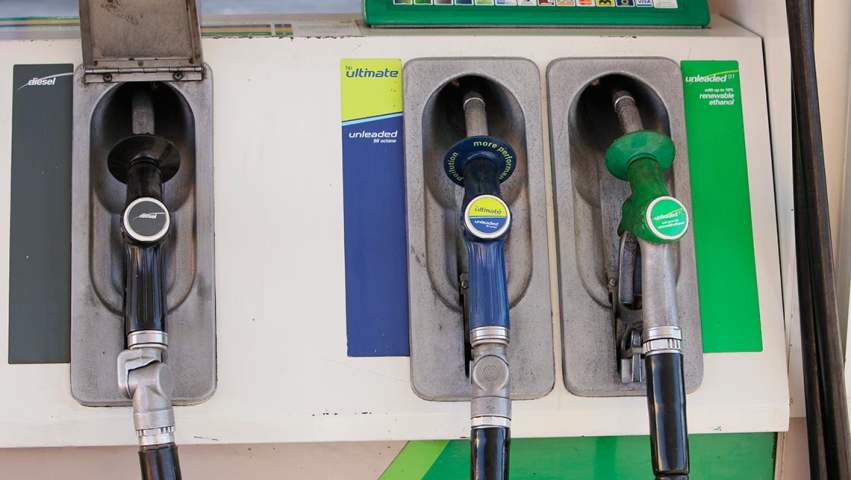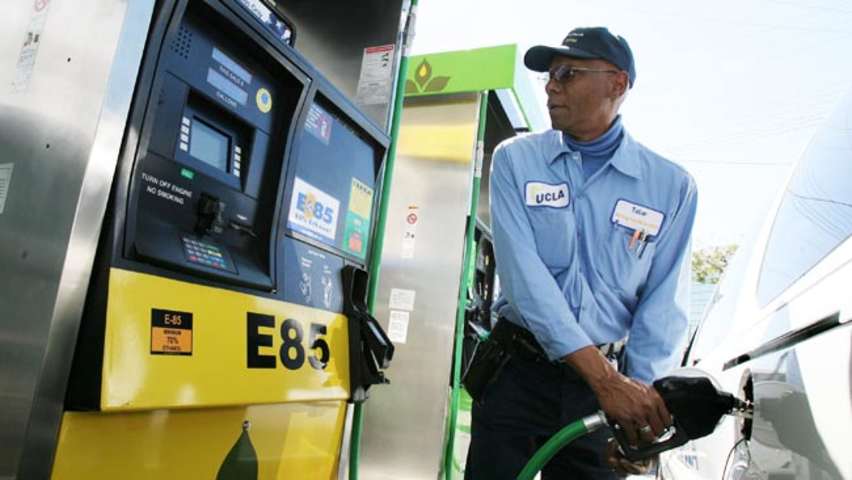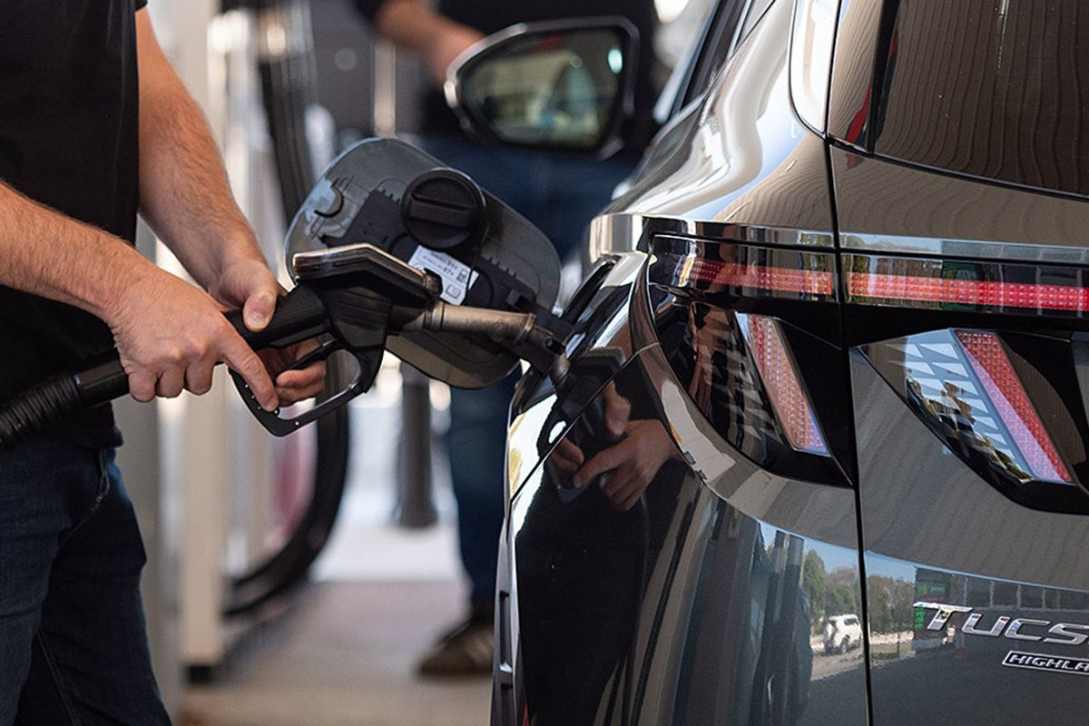If oils ain't oils (as the old TV advert goes) then petrol certainly ain't petrol either. In fact, which fuel you pump into the tank of your car has never been a more complex question.
And getting it wrong can not only make your car run poorly, it can also hit you in the wallet by making your car use more fuel than it should and, in extreme cases, can actually damage your car’s engine. In 2021, knowing what is the best fuel for your car is crucial.
So let’s go back to basics. In the old days, petrol contained tetra-ethyl lead which acted as a lubricant inside the engine and boosted octane rating (how stable fuel was before it exploded in an uncontrolled way inside the engine and, therefore, how much power the engine could be tuned to make).
But burning this leaded petrol had nasty side effects such as spewing microscopic lead particles into the air, leading to several health problems including breathing difficulties and even impaired brain development in children.
So, the oil industry was set the task of fixing those problems and unleaded petrol (ULP) was the resulting product. In Australia, all new petrol cars sold since January 1, 1986 have been designed to run on ULP only and it’s actually illegal to put leaded fuel (when you could still buy it, which hasn’t been for some years) in a post-1985 car.
Other countries adopted ULP fuel much earlier than we did. Japan was the first in the world (1972) with the USA following in 1975; more than a full decade earlier than Australia.
While air quality jumped as each country phased in ULP, the loss of lead did pose a few problems. That lubricating function was gone and, engineers had also lost a cheap way of boosting the octane rating of their petrol.
Both problems were overcome by altering engine design and changing the petrol refining process to slightly change the chemical make-up of the end product.
But there was another reason to get rid of lead from petrol. To further clean up the tailpipe emissions, the car industry came up with a thing called the catalytic converter which forms part of the car’s exhaust system and chemically reacts with the exhaust gases to turn some of the nasties into more benign chemical compounds.
That was good news, but the problem was that the lead in leaded petrol was soon found to 'poison’ the catalytic converter, wrecking it. Clearly, lead had to go.
Which is how we wound up with the fuels we now know; ULP and its high-octane brother, Premium ULP (PULP). Even then it’s not that simple, as there are fuels with middling octane ratings as well as petrol that includes a percentage of ethanol.
Ethanol found its way into petrol because it has a higher octane rating than petrol as well as reducing harmful tailpipe emissions. It’s also made from potentially sustainable crops.
In the right vehicle, petrol with a percentage of ethanol can be a good thing, but in the wrong car, it can be damaging.
By now it should be obvious that the correct petrol for your car is critical. So how do you know which one is right?
The owner’s manual in the glove box will tell you all you need to know, but many cars also have this information printed inside the fuel-filler flap.
If you’re still in doubt, most manufacturers have a hotline for this sort of information, and don’t forget the state motoring clubs as a source of information.
Remember, too, that the octane rating for your car is the minimum required, not the maximum. Bear in mind, too, that any fuel-quality (as opposed to octane-rating) comparison will usually have more to do with the condition of the underground tanks at an individual service station than it will between competing brands.
So, given there are normal unleaded fuels, special unleaded and even some blended fuels, what are the common types of petrol you’ll be offered at the pump and the relative price you be asked to pay?
As with any subject, the best way to compare fuel is to know what each one is and does. So here’s our guide:
91 RON ULP

This is the most common petrol sold in Australia right now and the one that’s right for the majority of cars on the road. The RON stands for Research Octane Number which is the most common measurement system used to arrive at the fuel’s octane rating.
The 91 is the fuel’s octane rating which is the lowest octane fuel you can buy at a service station. Interestingly, although it’s the petrol that’s sold in the greatest volume and has the lowest octane rating, it’s not always the cheapest.
Generally speaking, this is the right petrol for 'normal’ cars, although normal is harder to pin down these days. To be more specific, engines that are not highly tuned or designed for extra heavy-duty applications are the most likely to be fine to run on 91 RON ULP.
Again, though, check your owner’s manual because a lot of cars that seem to fall into that category often require a higher octane rating than that offered by 91. The move to smaller, turbocharged, more highly tuned engines for many cars is part of the reason for this.
The big advantage of unleaded 91 vs 95 (or any other form of ULP) is that it’s often all the octane you need and it’s cheaper to buy.
95 RON ULP

The next step up the octane ladder, 95 octane fuel allows engineers to tune their engines a little more aggressively before causing that uncontrolled ignition (also called pinging or detonation) that can damage an engine internally.
Put simply, 95 RON is a just a little more 'stable’ than 91 RON and resists pinging longer, allowing the engine to do its thing properly.
In the process, the more highly tuned engine is a little more efficient, meaning it can make a little more power on the same volume of fuel.
That same efficiency advantage means an engine tuned for unleaded 95 can also make the same power as the same engine tuned for 91 RON on slightly less fuel. Theoretically, anyway.
On average, 95 RON will cost a few cents per litre more than 91 RON ULP. There are no hard and fast rules on what types of cars need 95 RON.
You certainly can’t tell by looking at the vehicle, anyway; it all depends on how much performance the carmaker has attempted to squeeze out of it.
This fuel exists because some engines need a little more octane, but not the full-fat octane experience of PULP.
98 RON PULP

Often called premium unleaded petrol, 98 RON is the fuel you need for high-performance cars with highly tuned engines. But it’s also the fuel specified for many of those modern, small-capacity turbo engines that are in vogue right now.
The more power engineers try to screw out of an engine, the more it’s likely to ping or detonate if the fuel isn’t up to the job. That’s where a high octane fuel like premium ULP comes in.
Premium ULP is often as much as 20 or even 30 cents per litre more than 91 RON, but in theory, an engine tuned for unleaded 98 will go further on each litre of petrol than the theoretically 'lazier’ engine tuned for unleaded 91.
Obviously, there’s more to engine efficiency than simply the state of tune, but it’s certainly one part of the puzzle.
PULP’s big party trick, then, is its ability to allow for more efficiency and more power on fewer litres. It’s the highest octane fuel available at the majority of service stations.
Some fuel companies also spruik their premium fuels as having a cleaning effect on the inside of an engine. But all modern fuels have additives to achieve this.
On the flip-side, a quality fuel like a PULP is likely to burn more completely in the more advanced engines it’s designed for, so less soot could be a by-product of that.
E10 ULP

To put it as simply as possible, E10 is normal 91 RON ULP, blended with up to 10 per cent ethanol, an alcohol that is usually (in the case of the fuel industry) a by-product of the flour-making process.
When blended at that 10 per cent ratio, E10 vs 91 ULP has an octane rating of about 94 RON, so it won’t harm any engine that is designed for 91 RON fuel through lack of octane.
The catch is that not all 91 RON cars can use ethanol-blended fuel like E10. That’s particularly true of older cars which were never designed with E10 in mind.
In the case of those, various plastic and rubber components in the fuel system can be damaged by the ethanol content, even at 10 per cent, meaning big repair bills down the road.
Can my car use E10, is the first question you must answer. Again, check your owner’s manual for E10 compatibility or there’s a good website run by the NSW government that lists E10 fuel compatible cars.
Check it out at: https://www.nsw.gov.au/topics/e10-fuel/compatibility-check
Even though E10 is the cheapest fuel at the bowser, that doesn’t mean it will result in massively lower running costs.
Ethanol has less energy than petrol, so you’ll probably use a little more E10 than travelling the same distance in the same car on 91 ULP. So why use it? Because it’s a little bit greener and you stand to save a few dollars.
E85

What is E85 fuel? As the name suggests, E85 is a blend of 85 per cent ethanol (the same ethanol that’s in E10 ULP) and 15 per cent unleaded petrol.
It’s often used in race cars as it has an octane rating of 100 (or more) and can therefore work in highly tuned engines. But if you have a car that is rated as a flex-fuel vehicle, then your car can also use E85 (or E10) as it has the necessary engine controls to make use of the stuff as well as the ethanol-resistant hardware.
E85 is harder to find than other fuels as not all service stations have it. The other catch is that your fuel consumption will increase by about 30 per cent (you’ll travel less distance on each litre) because the ethanol content has less stored energy than petrol.
On the plus side, E85 reduces emissions and because it’s made from farmed crops, it can also reduce your car’s carbon footprint.
Prices vary widely, apparently for no good reason. Sometimes, E85 can be the cheapest fuel on the forecourt, other times it can be 20 cents a litre more than PULP.
Speaking of price variations, bigger metro areas like Sydney and Melbourne tend (very generally) to have greater price ranges across the city than a smaller metro area such as Perth.
Queensland fuel prices, meanwhile, which were once the lowest in the country, are now as high, or higher, than other capitals.
What happens if…
…I put E10 in my non-compliant car?
What happens if you put E10 in an old car is… not much, provided you drive gently and dilute the contents of the tank with ULP or PULP as soon as possible.
What is E10 fuel going to do to your engine long term? Again, not much provided you don’t make a habit of it. But if you allow E10 to sit in a non-compliant car, you could easily damage parts of the fuel system.
…If I mix, say, 91 RON ULP with 98 RON ULP?
Depending on the percentages of each, you’ll wind up with a tank full of fuel that has an octane rating somewhere between those two numbers. On a car designed for 91 RON fuel, that won’t matter, but if the car requires 98 RON, you might find the octane rating is not high enough.
But don’t panic, modern engines have sensors that can alter the car’s tune if the computer thinks the fuel is sub-par octane-wise.
Meantime, can you mix E10 and unleaded? You can, but there’s no reason to. If your car’s engine is designed for E10, why not save a few cents per litre and just use E10?
…I put 98 RON in a car designed for 91 RON? Will my car perform any better or use less fuel?
No, it won’t. Unless the engine is optimised for the extra octane, the premium fuel won’t do a darn thing. In fact, one engineer we talked to reckoned that the way PULP burns, it might actually make less power in an engine not designed for it.


.jpg)

.jpg)
 copy.jpg)
.jpg)
.jpg)

.jpg)




.jpg)






Comments